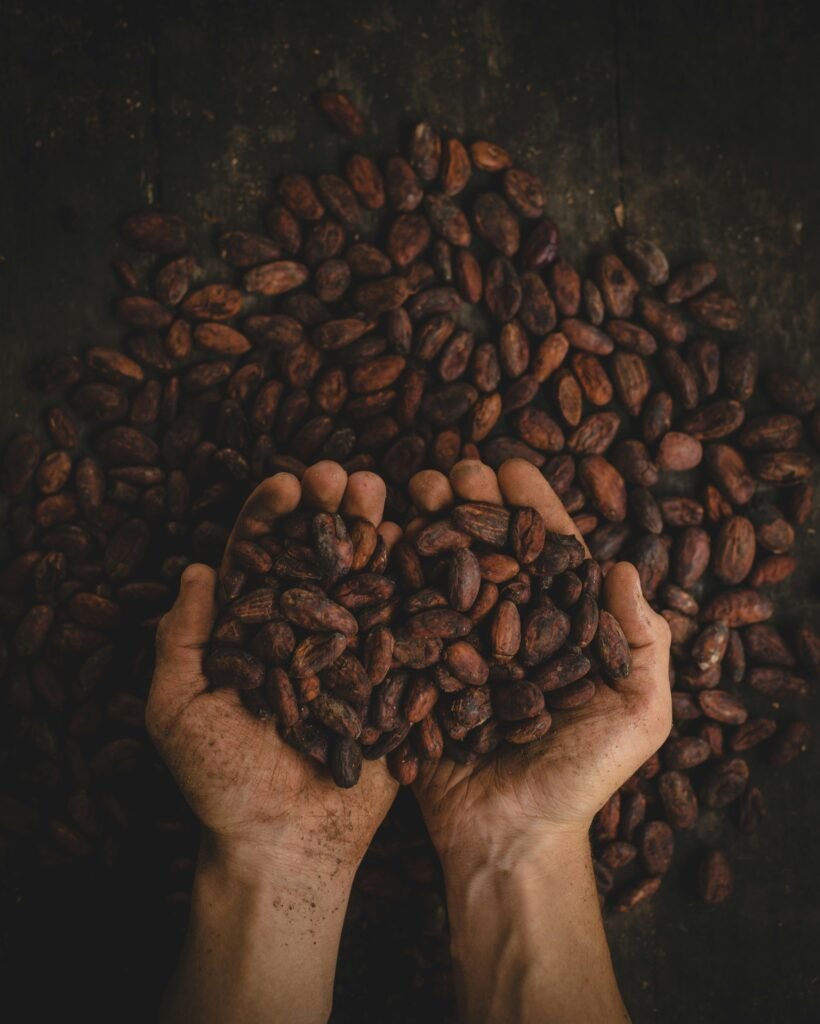The price of a chocolate bar seems to have a life of its own these days. You might have noticed that your favorite treat is getting a little smaller, or a lot more expensive, or both. This isn’t just a random blip in the market; it’s the result of a complex and challenging situation in the global cacao industry. While it’s easy to see the price tag, the reasons behind the hike are far from simple. They involve a perfect storm of environmental, economic, and social factors converging in the very heart of the world’s cocoa production.
To truly understand why we’re paying more for our chocolate fix, we need to look at the source: the humble cacao bean, and the regions that produce the vast majority of it.

The West African Crisis: A Concentrated Problem
The global cacao industry is heavily concentrated, with over 60% of the world’s supply coming from just two countries in West Africa: Côte d’Ivoire and Ghana. This heavy reliance on a single region makes the entire supply chain incredibly vulnerable to any disruption there. And lately, that disruption has been severe and multi-faceted.
For the past several years, these critical cocoa-producing regions have been grappling with a trifecta of crises: climate change, crop disease, and deep-seated economic issues for farmers.
1. The Climate Crisis on the Cacao Belt
Cacao trees are notoriously finicky. They thrive in a very specific microclimate—one with high humidity, consistent rainfall, and shade from direct sunlight. The West African Cacao Belt, a narrow strip of land just 20 degrees north and south of the Equator, has historically provided these ideal conditions. However, climate change is throwing everything out of balance.
- Erratic Weather Patterns: Recent years have seen unprecedented weather extremes. The El Niño weather pattern in 2023 and 2024 brought hotter, drier conditions, leading to severe droughts that withered crops and reduced yields. Conversely, periods of excessive rainfall have caused flooding, which in turn creates a perfect breeding ground for crop diseases.
- Heat Stress: Cacao trees struggle to grow and produce pods when temperatures exceed 32°C (89.6°F). Climate change has made such heat events more frequent and prolonged, directly impacting the health and productivity of the trees. Some studies predict that by 2050, large parts of West Africa may become too hot to grow cacao at all, a terrifying prospect for an industry so reliant on the region.
2. The Double Threat of Disease
On top of the unpredictable weather, farmers are fighting a losing battle against devastating crop diseases. The most significant of these is the Cacao Swollen Shoot Virus (CSSV). Transmitted by tiny mealybugs, this virus stunts the growth of the cacao tree, dramatically reduces yields, and can eventually kill the plant. In many areas, it’s a rapidly spreading epidemic, and the only effective solution is to cut down and destroy the infected trees, a brutal reality for farmers who lose their entire livelihood.
Another persistent threat is Black Pod Disease, a fungal infection that causes the cacao pods to rot and harden, rendering them useless. Excessive rainfall and high humidity, which are becoming more common due to climate change, make this disease even more prevalent.
3. The Economic Realities on the Ground
While global cocoa prices have soared, this hasn’t necessarily translated to a better life for the farmers themselves. The vast majority of West African cacao is grown by smallholder farmers who earn a pittance for their beans. Years of low prices have left many farmers in poverty, unable to invest in proper farming practices, fertilizers, or disease-resistant plants. This has created a vicious cycle of low yields and low income.
- Outdated Practices: Without the financial means to modernize, many farmers continue to rely on older, lower-yielding trees that are more susceptible to disease. The lack of investment in new, more resilient varieties and agricultural techniques further exacerbates the supply problem.
- Alternative Livelihoods: The grueling, low-paying work of cacao farming has driven many younger people to seek other forms of income, including illegal mining, which destroys farmland and further reduces the available land for cultivation. This brain drain from the industry makes the future of cacao production even more uncertain.
The Global Impact: From Farm to Checkout
The result of these challenges is a massive global cacao shortage. The International Cocoa Organization (ICCO) has reported a significant decline in global cocoa production for the current season, leading to the lowest stocks in decades. When supply plummets while global demand remains steady or even increases, the commodity price skyrockets.
In early 2024, cocoa prices hit a historic high, surpassing $10,000 per metric ton—a staggering increase that has sent shockwaves through the entire confectionery industry.
What Does This Mean for Your Chocolate Bar?
Chocolate manufacturers, from large multinational corporations to small artisan chocolatiers, are feeling the pinch. They can’t simply switch to an alternative ingredient, as cocoa is the defining component of chocolate. To cope with the spiraling cost of their primary raw material, companies are resorting to several strategies:
- Price Increases: This is the most direct and obvious response. The higher cost of cocoa is being passed on to consumers.
- “Shrinkflation”: Many companies are keeping the price the same but reducing the size of the product. The chocolate bar looks the same on the shelf, but you’re getting less for your money.
- “Skimpflation”: Some manufacturers are altering their recipes to use less cocoa and more sugar or other fillers. This changes the flavor and texture of the chocolate, often to the disappointment of consumers.
- Seeking New Sources: Some companies are looking to diversify their supply chains by sourcing beans from other regions, such as Central and South America or Southeast Asia. However, these regions produce a smaller percentage of the world’s cocoa and cannot easily fill the massive supply gap.
Will Prices Ever Go Back Down?
While there may be minor fluctuations, experts predict that elevated chocolate prices are here to stay for the foreseeable future. The core issues—climate change, crop diseases, and the economic plight of farmers—are structural problems that will not be solved overnight. New regulations, such as the European Union’s deforestation law (EUDR), which requires strict traceability of cacao beans, are also adding new layers of complexity and cost to the supply chain.
For chocolate lovers, this new reality means that chocolate is becoming less of a common indulgence and more of a luxury. It’s a bittersweet truth that reminds us of the profound global connections that link our everyday pleasures to the fragile ecosystems and human communities on the other side of the world.

